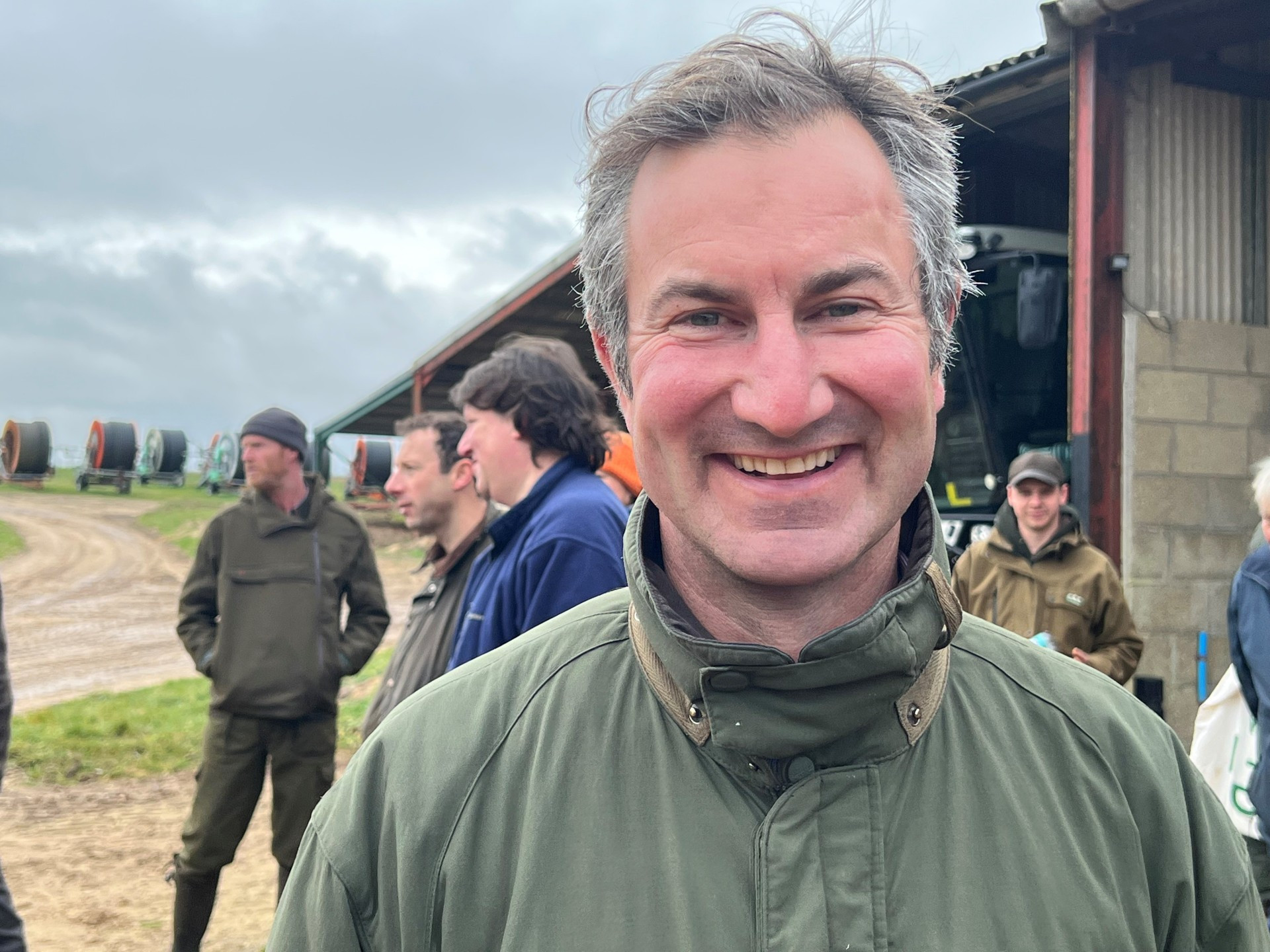News
AF Changemaker: fired up about fixing the fundamentals in farming
28 February 2024
"I'm James Bucher, of Bucher Farms in Suffolk. We have 600 hectares of light sandy land, all irrigable. We’ve gone from a fairly intensive traditional Breckland rotation of vegetables and cereals with a bit of sugar beet thrown in to a really, really broadened rotation with minimal soil disturbance."
"We decided in 2018 we need to start improving soil health.
"The driver for change was partially financial. Some of our cereal yields in heavily root cropped rotations fell by up to 50% in 18 years from 2003. That was obviously costing us money. As was significant soil degradation: very wet, waterlogged, slumpy, structureless anaerobic soils.
"Walking at night through our garden with the dogs in winter you shine a light on the ground on a damp evening and there's loads of worms on the grass all shooting back into the soil. You got onto the field and there's nothing.
"You're supposed to see 16 worms in a healthy spade of soil. We were seeing none. If we wanted biology in the soil to work with the plant and help us grow crops, then something needed to be done.
"Tillage was the first thing that had to be addressed. In 2020 we gave the vegetable guys notice. We just felt if we didn't have full control of the land we'd never be able to achieve anything. We can direct drill and cover crop land in front of our own crops. But as soon as we returned to the vegetable guys, out came the de-stoners and ridgers and all that, and we were taking one step forward and two steps back. We also pledged to cut out fungicides, plant growth regulators, insecticides and cut synthetic nitrogen use.
"We had detailed soil analysis done by Ben Taylor-Davies in early 2022. The figures made sad reading e.g. 1.5-2%. organic matter. But we thought if this is rock bottom there's only one way we can go."
"Last year was our first year in the ‘new dawn’. We saw yield losses of probably 1-1.5 t/ha down on wheat, perhaps down to exceptionally dry conditions. Barley yields hit our average. So, when I heard about Sandy software at a farm walk, we started speaking to Trinity Agtech, to see whether it could identify another income stream for the farm. I'm interested in seeing what carbon we could sequester and if there's income to offset any yield loss from this new system of farming.
"Sandy talks to Gatekeeper. So, if you keep fairly accurate Gatekeeper records for spraying, cropping and fertiliser applications, it's simply a case of pressing a button and the whole lot gets imported into Sandy.
"Sandy likes you to put in hedge lengths, margins, cover crops, and wild bird mixes. Tillage is another thing to record. If you till the soil, full till as they call it on the system, you won't be sequestering much carbon.
"For me, who hadn't used Gatekeeper to its full extent, it has taken a bit of time to get all the data in. You have to back-date five years’ worth of data.
"I’ll see whether I could trade carbon. Not sure if I will. The other reason for using Sandy is to explore biodiversity net gain, as another string to my bow when we go looking for businesses to work with. I’m keen to make relationships with local firms to buy from us and we can offer them farm walks to inform their staff or customers. Sell our story, too."
"With AF I get 15% off Trinity Agtech Sandy software for a year. We get all our fuel, our electricity through AF, agchem, some fertiliser, trace elements, phones, machinery parts, and construction materials as well.
"I like working with AF. The people are very courteous and polite, always helpful and source things for us no matter what I’ve asked for - and I have asked for some very unusual things!"
"I have friends as fed up with farming as I was. Now I find it fascinating. I like showing people around and talking about what we can do to farm better.
"We're getting involved with firms like Hodmedods and Wild Farmed. We'll be doing more companion crops, growing two or more crops in the ground together - a legume fixing and supplying nitrogen to a cereal. With more than one species in the ground, you don't get the disease pressures you do with a monocrop.
"I’ve just had a massive, massive second wind for farming since we changed to this system. It's just so much more fun, so much more interesting. There's so much to learn, but it's all fascinating. I just 100% think this is the way that everyone should be going with subsidies being phased out, nitrogen sitting at whatever it is now, £500 a tonne, pesticides not getting any cheaper. Farming is not going to be sustainable. I've heard from two or three people about how much it's costing them to grow wheat this year under a conventional system and their break even will be four tonnes an acre or ten tonnes a hectare. It's ridiculous. People are going to have to start looking at different ways to farm."